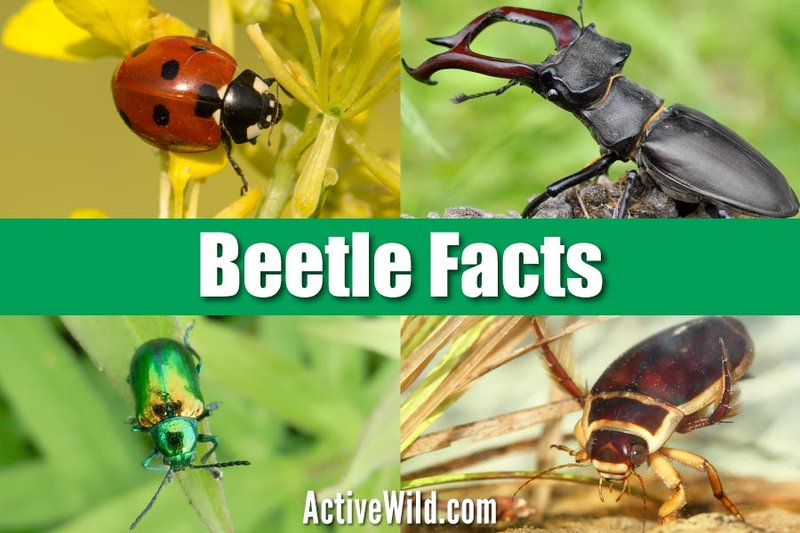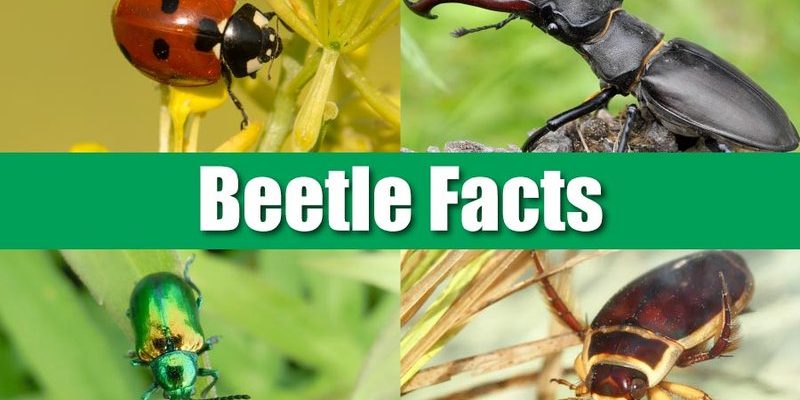
Imagine sitting down for coffee, trying to wrap your head around how these little creatures can be so varied. It’s mind-boggling to consider that beetles can range in size from the tiny featherwing beetle, which is just 0.3 mm long, to the titanic Goliath beetle, which can weigh as much as a small dog! Let’s dive into some fascinating facts that reveal how extraordinary beetles really are.
1. Beetles Are Crazy Diverse
Beetles belong to the order Coleoptera, which means “sheath wing.” This is fitting since their back wings are shielded by hardened forewings, called elytra. Now, here’s the thing—beetles represent the largest group of animals on the planet! With such a staggering number of species, they can be found in almost every habitat imaginable. From deserts to rainforests, you name the place, and there’s likely a beetle making it home.
You might wonder, why are there so many? Well, their adaptability to different environments and their various diets—ranging from plants to decaying matter—have enabled them to thrive in countless niches. This sheer diversity makes beetles a vital part of ecosystems, contributing to everything from pollination to nutrient recycling.
2. Beetles Have a Unique Life Cycle
Beetles undergo a fascinating transformation known as *complete metamorphosis*. This means they go through four distinct life stages: egg, larva, pupa, and adult. Each stage is a completely different form with unique behaviors and habitats. For example, the larvae often look like little worms and are busy munching away at plants or wood, while adults might flaunt brilliant colors and can take flight.
Let me explain why this is significant. The adult and larval forms of a beetle often have different diets. This way, they don’t compete for the same resources, allowing the population to flourish. So, a beetle can swoop in as a cool bug on your windowsill, while its larval stage might be buried deep in the soil, digesting its meals.
3. Some Beetles Can Glow
One of the most magical aspects of certain beetles is their ability to produce light through a process called bioluminescence. This is commonly known for fireflies, but did you know there are beetles that can do the same? The glow comes from a chemical reaction within their bodies, often used to attract mates or warn predators.
Imagine walking through the woods at night and spotting glowing beetles lighting up the ground like tiny lanterns! The most famous bioluminescent beetle is the *Photinus pyralis*, often called the common firefly. Fun fact: they don’t actually produce light as adults; it’s mainly in the larval stages where you can see this glow.
4. They Can Be Super Strong
Here’s a fun thought: beetles are incredibly strong for their size. Some species can lift objects up to 1,000 times their own weight! This impressive feat is thanks to their tough exoskeleton and muscle structure. To put this into perspective, it’s like a human lifting a car!
This strength is particularly useful when it comes to mating rituals. Male beetles often engage in battles with others to win over a mate, using their strength to flip their opponents or push them away. So, if you’ve ever seen beetles tussling in your garden, you’re witnessing a powerful display of strength—and nature’s own version of reality TV!
5. Beetles Play a Key Role in Ecosystems
You might be surprised how much we rely on beetles for a healthy environment. They serve a crucial role as decomposers, breaking down decaying plant material and waste. This helps recycle nutrients back into the soil, which is vital for plant growth.
Moreover, beetles act as pollinators. While they don’t get as much credit as bees, many species do help plants reproduce by transferring pollen as they move from flower to flower. So, every time you admire a blooming garden, remember that beetles are quite possibly behind the scenes, contributing to that beauty.
6. Some Beetles Have Impressive Defense Mechanisms
Beetles have evolved some fascinating ways to protect themselves from predators. One common method is through the release of toxic chemicals. For instance, the bombardier beetle can shoot a hot, noxious spray at attackers, which is a clever defense tactic that few predators want to tangle with.
Others use mimicry, where they imitate the appearance of more dangerous insects. This helps them avoid becoming a meal. Imagine a harmless beetle looking just like a bee—that’s a smart disguise!
7. They Can Change Colors
Have you ever seen a beetle that seems to shift colors as it moves? This phenomenon is known as iridescence. It occurs when light hits the surface of a beetle’s shell in a certain way, creating beautiful rainbow-like effects.
Many jewel beetles exhibit this mesmerizing trait, often used in courtship displays to attract mates. It’s like nature’s own sparkly jewelry! The color change can also help them blend into their surroundings, providing camouflage from predators.
8. Beetles Can Live for a Surprisingly Long Time
While many insects have short lifespans, some beetles live much longer. The queen termite can live for over 20 years, but certain beetles, like the *Goliath* and *Longhorn beetles*, can live for several years too.
This longevity can be attributed to their slow growth and the protective features of their exoskeleton. Imagine being able to rely on the same beetle for years to help keep your garden healthy!
9. Beetles Are Found Worldwide
You might think beetles are just a backyard occurrence, but they’re actually found all over the globe, from the Arctic to tropical rainforests. This adaptability is partly why they’re so prevalent.
There are beetles that thrive in extreme conditions, like the Antarctic midge that withstands freezing temperatures. Others prefer the tropical climate, where they can be vibrant and colorful. Just take a moment to appreciate the fact that this little creature can adapt to nearly every environment on Earth!
10. Beetles Are Important for Research
Researchers study beetles to gain insights into biodiversity, ecology, and even climate change. Their presence (or absence) in certain environments can serve as indicators of ecosystem health.
For instance, studying the decline of specific beetle species can signal larger environmental problems. So, while they might seem tiny and insignificant, beetles hold vital information about the world around us.
In conclusion, beetles are more than just bugs you might squash during a summer picnic; they’re complex, essential creatures that contribute in countless ways to our ecosystem. Next time you see one crawling around, take a moment to appreciate the fascinating world of beetles. They truly are the unsung heroes of the insect kingdom!

